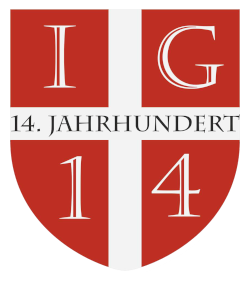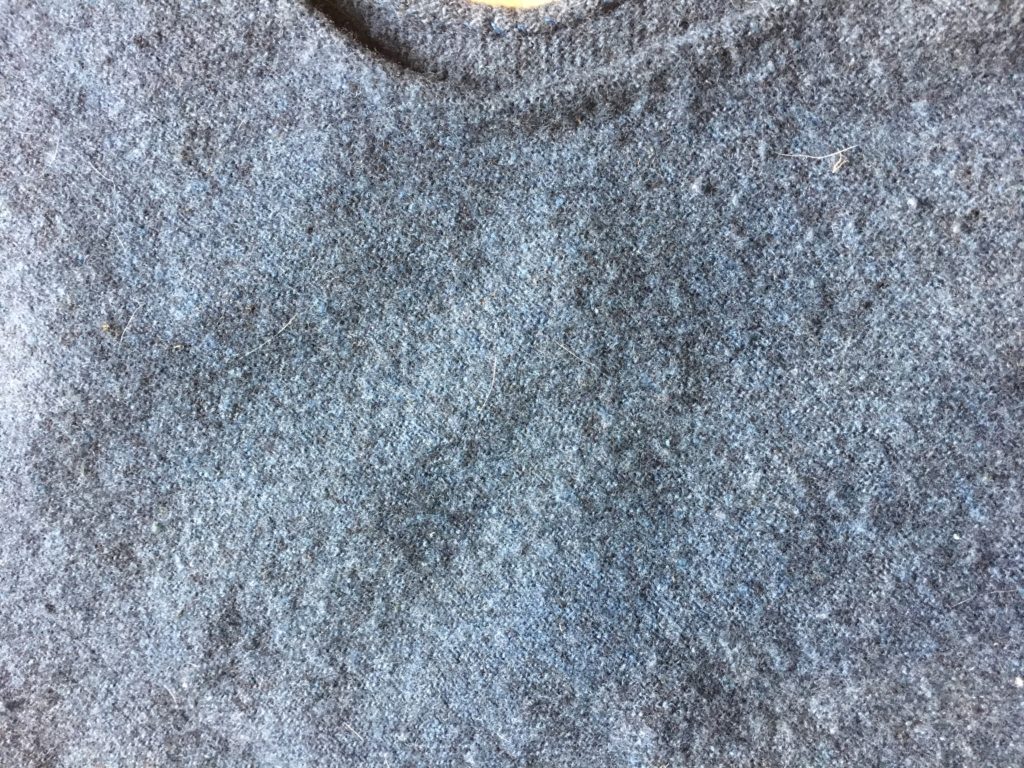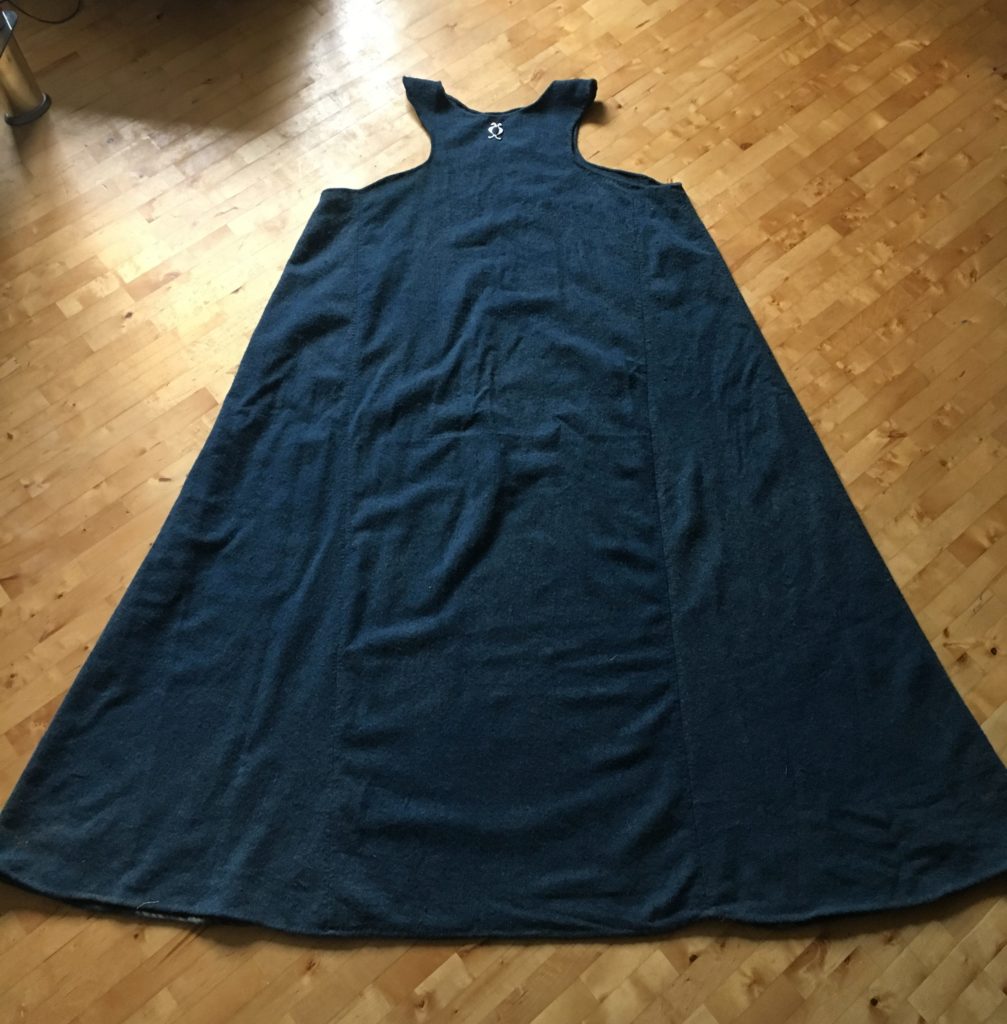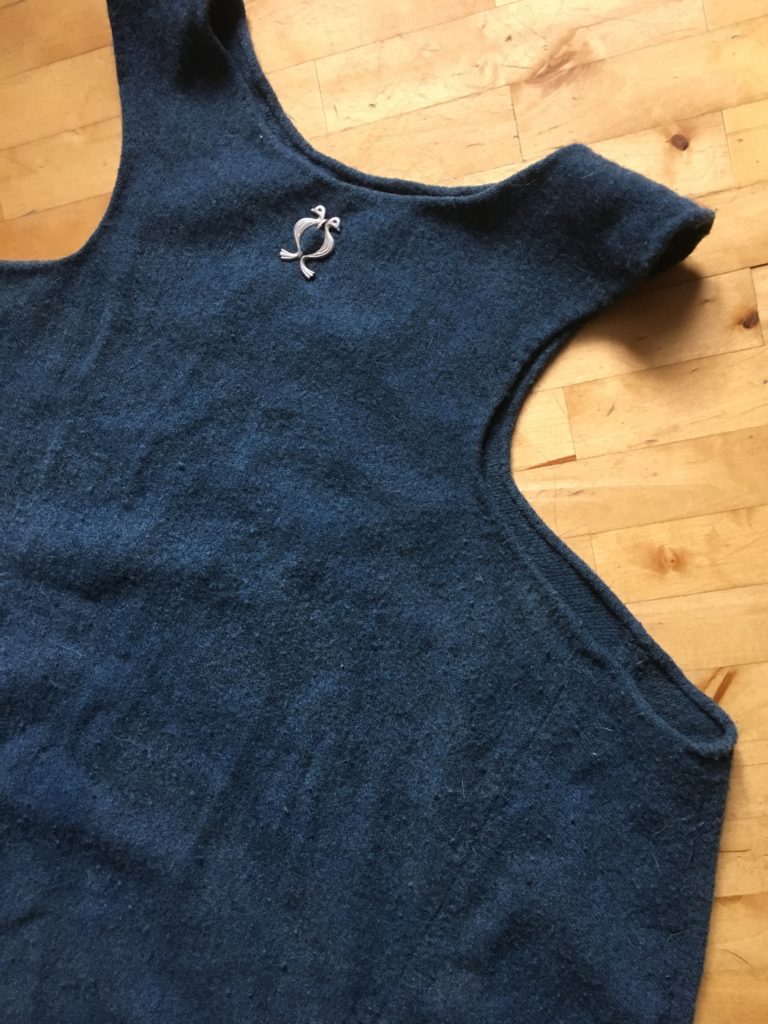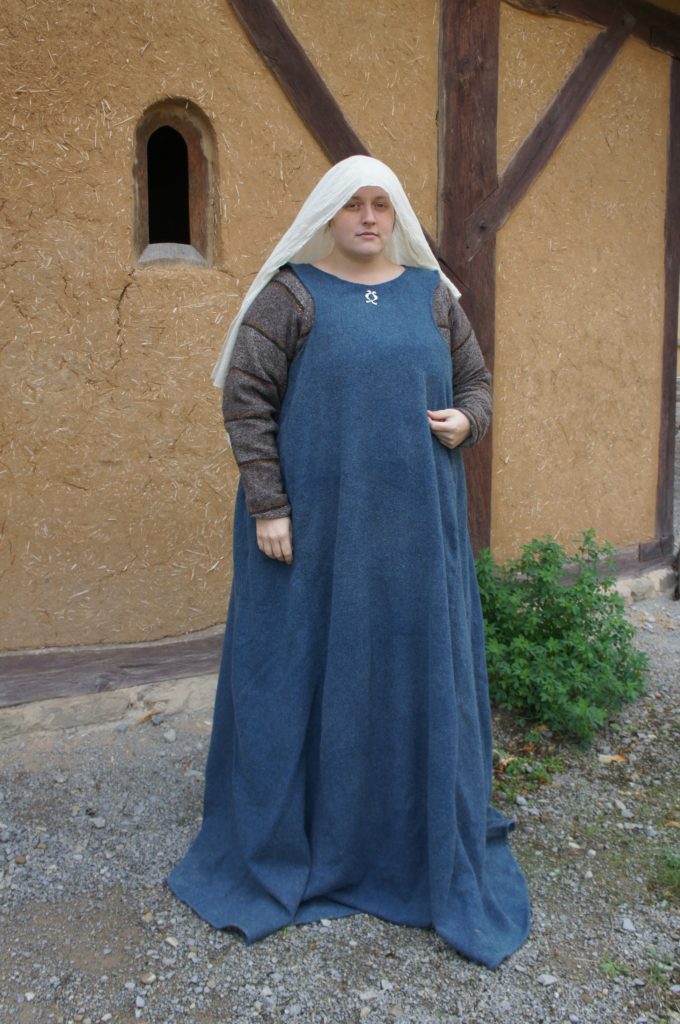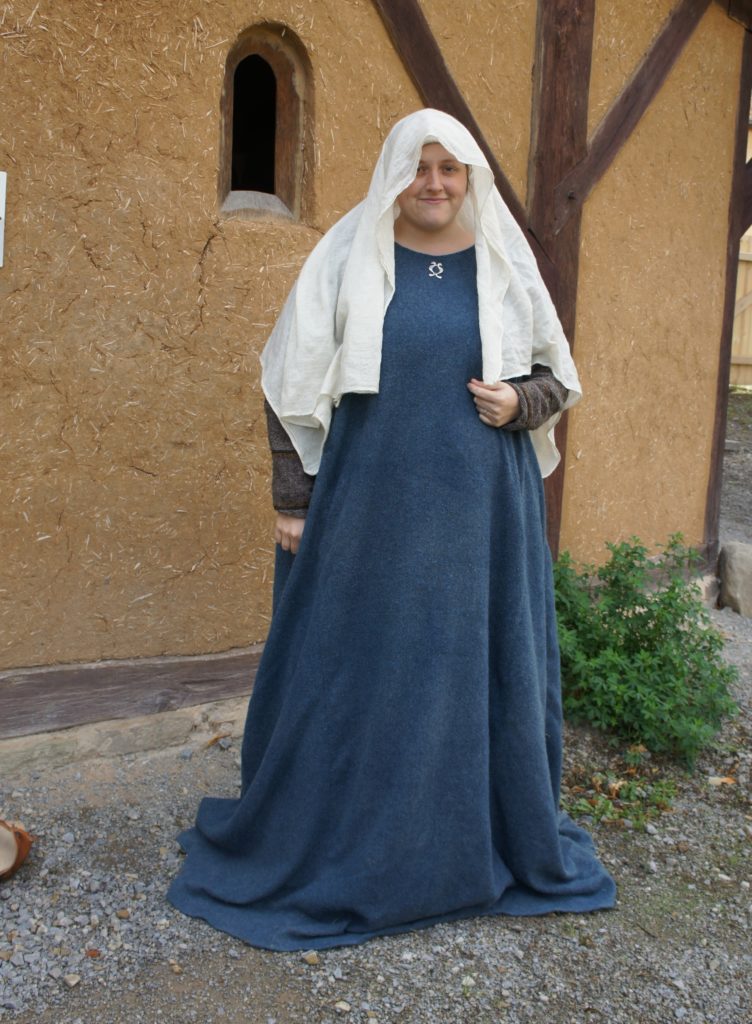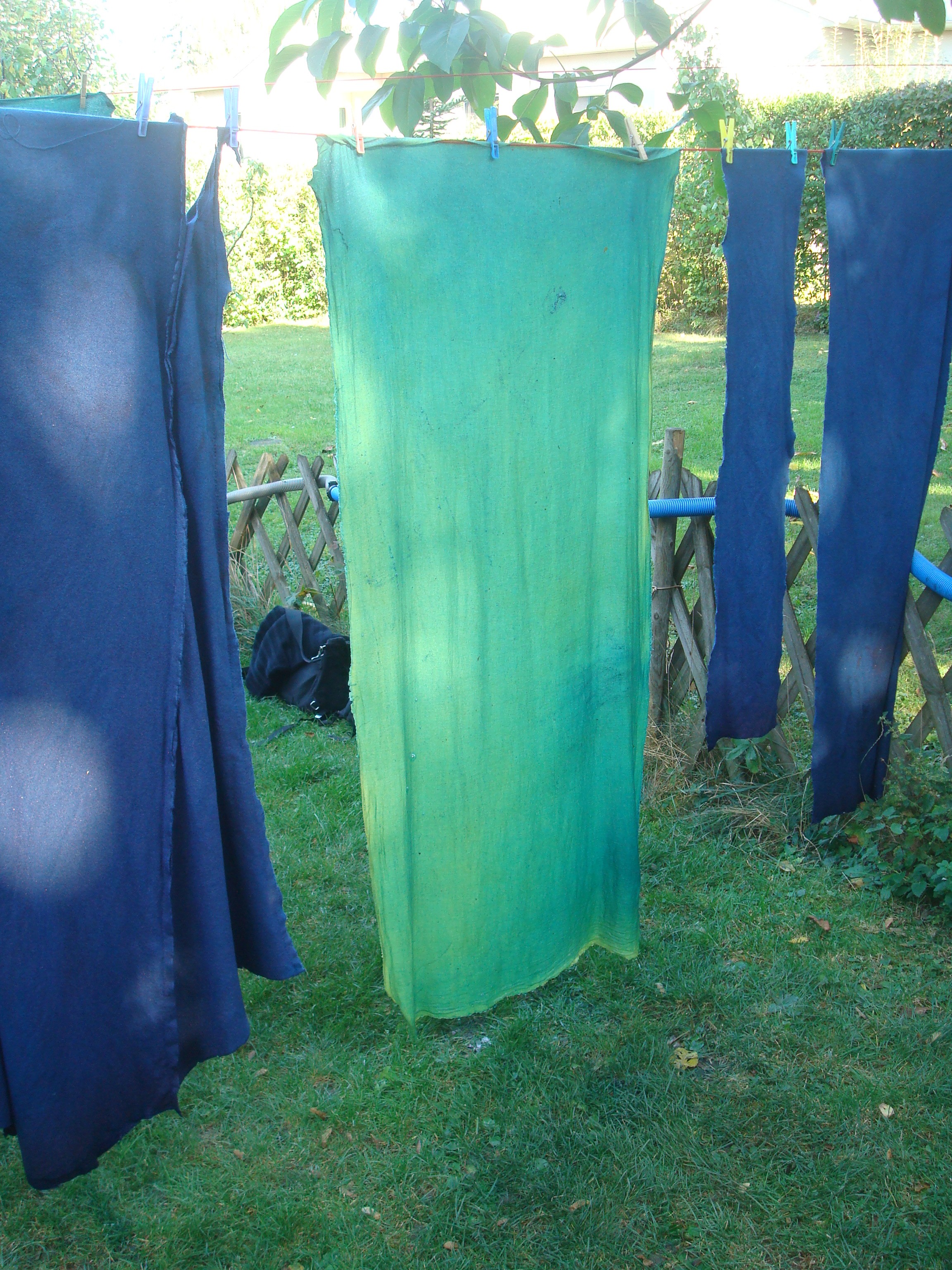A sleeveless surcoat from 1320-40
This year, at the medieval days in Bad Windsheim, the topic was early 14th century in our part of the open air museum. I urgently needed more layers against the cold in the unheated original medieval houses.
So I did some research into sleeveless surcoats that would fit the time around 1320-40 as a representative dress for Sundays and a rather more simple household (this discussion is really a tedious one, since the question as to what is considered “simple” or “wealthy” and how poor a crafter would be or how rich a nobleman, what is considered a “maid” or “citizen” is very difficult to answer, so I have become careful in using those words.).
I used the following pictures for my recreation:
In Cod 874 from Waldhausen around 1325-35 you can see tight fitting armholes
On this Madonna around 1330 from Opava, Czech Republic, you can see very deep reaching armholes and the surcoat is even belted!
In this fresco from Czech Republic around 1338 we also see thight armholes
The Biblia Pauperum from Vienna around 1340 is a pretty conservative work when it comes to the illuminations and offers a fairly conservative model of surcoat, but it has very pretty trimming around the edges
Speculum Humanae Salvationis from Karlsruhe around 1340-50
Klosterneuburger Evangelienwerk around 1340
and again, here it can be seen on the virtuous and foolish virgins alike
In this version of the Speculum Humanae Salvationis from Wien around 1330-40 the armholes are already a lot deeper. And also here in a depiction of Judith killing Holofernes. Here you also see gorgeous striped fabric! <3
Same book but rather tight armholes and an interesting button detail also in this illumination here the armholes are tight fitting
In the Lilienfelder Concordantiae caritatis around 1349-50 you can see much deeper armholes.
I think you can see a good tendency here in the forms of sleeveless surcoats in Austria that changes drastically in the 1340s and later forms into those huge windows as we know it from all thise chraracteristic 14th century illuminations. Tight fitting armholes were a fashion in the 1320s up to about 1340 and then become a more conservative style which could still work as a simple home-dress but would not count as high fashion any more in the 50s.
I had this beautiful indigo dyed blue wool from my colleagues Regina and Martin which my husband originally aquired for a mantle, but it has such a nice texture and drape, it really works well for a dress.
The cut is basically two rectangles for the front and the back and two rectangles cut in half diagonally for the gores at the sides. The armholes are cute at the end. I used different originals as a reference for the pattern, f.e. a sleeveless men’s surcoat from Herjolfsnes or the spanish finds from 13th century, which are unfortunately stilistically quite distinct from middle european fashion developments and can only give hints to the construction. The pellote of Eleonore von Kastilien is a good example for the pattern making, but as I said, spain and 13th century. The cut should always be adjusted to fit the illuminations that are closer in time and distance to your impression.
And this is how the surcoat looks when worn (as the fith layer over strophium, linnen underdress and two woolen kyrtles). The brooch btw is english, so not necessarily fitting here.
(Thanks to Leah Morgana Stadler for those cute fotos!)
The drape and the silhouette I think I did will, it could be a little tighter around the waist, that I might still adjust, but you also see very loose fitting surcoats in the illuminations. For next season I would still like to cut the armholes a little deeper and line the garment with fine wool or silk so it fits my 1350s impression.
Related Posts
The following posts might interest you as well:

